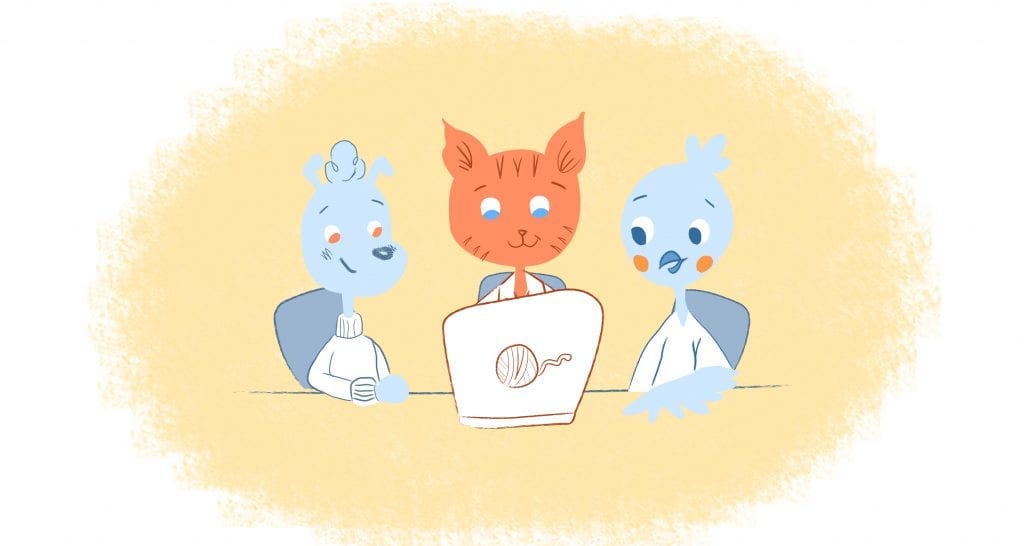

I think it’s safe to say that we’re all freaking out right now. But, even if we weren’t experiencing a worldwide health pandemic, adversity is always lurking in the shadows. And, as a leader, it’s your responsibility to keep your organization calm and carry on.
While that’s certainly no easy task, here are some of the best ways that you can effectively lead through hard and uncertain times.
Don’t sugarcoat it; be transparent.
“Be straight with people,” writes leadership educator and executive coach John Baldoni. “Reveal what you can about the business, but do not make promises you cannot keep, e.g., no layoffs.” He also recommends that you “stick to the facts. And remember that even what you think is valid now may not be so tomorrow.”
Look. You should always be honest and transparent with your team. In my opinion, it’s one of the most important traits a leader should possess. After all, transparency improves workplace engagement and problem-solving. It also builds trust and reminds everyone of the big picture.
Being transparent is even more important during periods of uncertainty if you want your organization to remain calm, focused, and productive. Don’t forget your remote team, either.
If this is an area that you struggle with, here are some ways that you create more transparency:
- Build meaningful connections by keeping everyone in the loop and checking in with them.
- Share results — even if it’s not good news, like a bad quarterly report.
- Ask your team questions and actually listen to what they’re saying.
- Treat everyone the same — no exceptions.
- Get your team members more involved in the decision-making process.
- Don’t avoid difficult decisions.
- Always know your “why,” aka your organization’s purpose.
Walkthrough the 5 A’s.
I wish I could tell you that never have to face hard times. But, as the current coronavirus pandemic has shown, that’s just not the case. In fact, if it wasn’t this unfortunate event, it would probably be something else. But, instead of letting it get the best of you, learn and grow from the experience.
“When faced with a tough situation, it’s normal to react in frustration,” says John Addison, author of Real Leadership: 9 Simple Practices for Leading and Living with Purpose. “And while it’s fine to vent to a peer outside of the group you’re leading, don’t let anger characterize how you interact with your team.”
Instead, Addison suggests that you “walk through the five A’s of leading under pressure and through adversity:”
- Assses. “Assess the situation quickly and honestly. Seek to truly understand the root of the situation.”
- Ask. The only way to get to the root is to ask questions like What are the facts? And Or are we doing everything right, and this is just how things turn out when we do it this way?
- Associate. Don’t just solicit feedback from those who report to you. Talk to a broader and more diverse group of people to help you uncover the root. They can also help you develop unique solutions.
- Articulate. No matter what, always “clearly articulate the values the company holds, the environment you’re trying to create and the culture you want to have.”
- Act. Finally, adjust and fix what needs to so that you can successfully move forward.
Create a continuous learning program.
Research from Harvard University’s Francesca Gino and Gary P. Pisano shows that leaders don’t learn from success. Success, they argue, “creates three kinds of traps that often impede deep learning.”
“The first is attribution error or the tendency to see superior performance as rooted in one’s actions rather than other factors (such as luck). Secondly, “success feeds overconfidence bias, which can then blind leaders to potential future problems and opportunities for innovation.” And, the “third is a tendency to fail to probe the root causes of success.”
In short, don’t fall into this trap. Instead, embrace failure and learn from it. However, you also don’t need to fail. You can also provide opportunities for you and your team to keep learning new skills via workshops, online courses, or mentorship.
Besides helping develop innovative ideas, this can make everyone from the top to the bottom more attractive to competitors. Obviously you don’t want to see your top talent leave. But, it shows them that you genuinely want them to achieve their goals.
Also, this could be a healthy distraction since everyone can focus on something else instead of the fear of the unknown.
Eliminate inconsistencies.
Ever since I was taught it, I’ve been a fan of Maslow’s Hierarchy of Needs. For those unfamiliar, ThoughtCo has an excellent rundown on what exactly this is. But. in a nutshell, this concept was developed by Abraham Maslow who stated that we’re motivated by five categories of needs physiological, safety, love, esteem, and self-actualization.
I’m not going to go into this in too much depth since I want to focus on the second category; safety.
“Our safety needs are apparent even early in childhood, as children have a need for safe and predictable environments and typically react with fear or anxiety when these are not met,” notes Elizabeth Hooper. “Maslow pointed out that in adults living in developed nations, safety needs are more apparent in emergency situations (e.g. war and disasters), but this need can also explain why we tend to prefer the familiar or why we do things like purchase insurance and contribute to a savings account.”
So, what does this have to do with your organization? Well, when possible, provide your team with a sense of security through consistency.
Sure. Depending on the circumstance, this isn’t always possible. But, here’s an example that you could try right now.
Let’s say that you and your team have a meeting every Tuesday at 3 p.m. You can still schedule this event even if you’re not together in the same office. Instead, you could plan a virtual meeting. It may not be the exact same, but it maintains a routine and schedule that everyone has gotten used to. And, that may be just enough to ease everyone’s anxiety.
Encourage your team to prioritize their health and wellness.
Right now, we’re all on edge. Some of us are concerned about the future of our business. Others are worrying about their health. And, while both can be out of your hands, you do have the ability to motivate your team to be happier and healthier during turbulent times.
John Hall has laid a lot of information on this subject in an article for Calendar. But, here’s a brief synopsis to get you started:
- Create an employee wellness program like providing gym memberships or access to counselors.
- Promote preventive care, such as on-site flu shots.
- Offer healthy snacks and lunches.
- Encourage exercise and movement. At Calendar, we’ve provided our team members, even those who work remotely, with standing desks.
- Gamify healthy choices, like rewarding team members who have committed to a healthy habit for 30 consecutive days.
- Establish flexible working arrangements.
- Offer unlimited vacations and sabbaticals.
- Provide volunteering opportunities.
Practice empathy.
Some people may think that this is a little out there. Whenever I’m anxious or on the verge of freaking do you know what helps me? Being empathetic. Maybe it’s because it’s a distraction. But, mainly, I’ve found that when I can assist others with a problem, I can use the same advice for myself.
Of course, there is only so much you can do. However, as a leader, your people are looking to you for advice and to navigate them through rough water. Listen to their concerns and offer solutions. Heck. Even just asking them may be enough to put their minds at ease.
And, if you feel that you aren’t the right person, refer them to someone who can. For example, if they’re struggling with anxiety give them the contact information to a trusted mental health professional. If they’re worried about their financial stability, put them in touch with a financial advisor.











Albert Costill
My name is Albert Costill and I'm a content marketer at Calendar. If I can help people become more productive in my journey, even better. If you ever have a question about your Calendar or how you can use it - - don't hesitate to reach out. I'm a Calendar Pro.